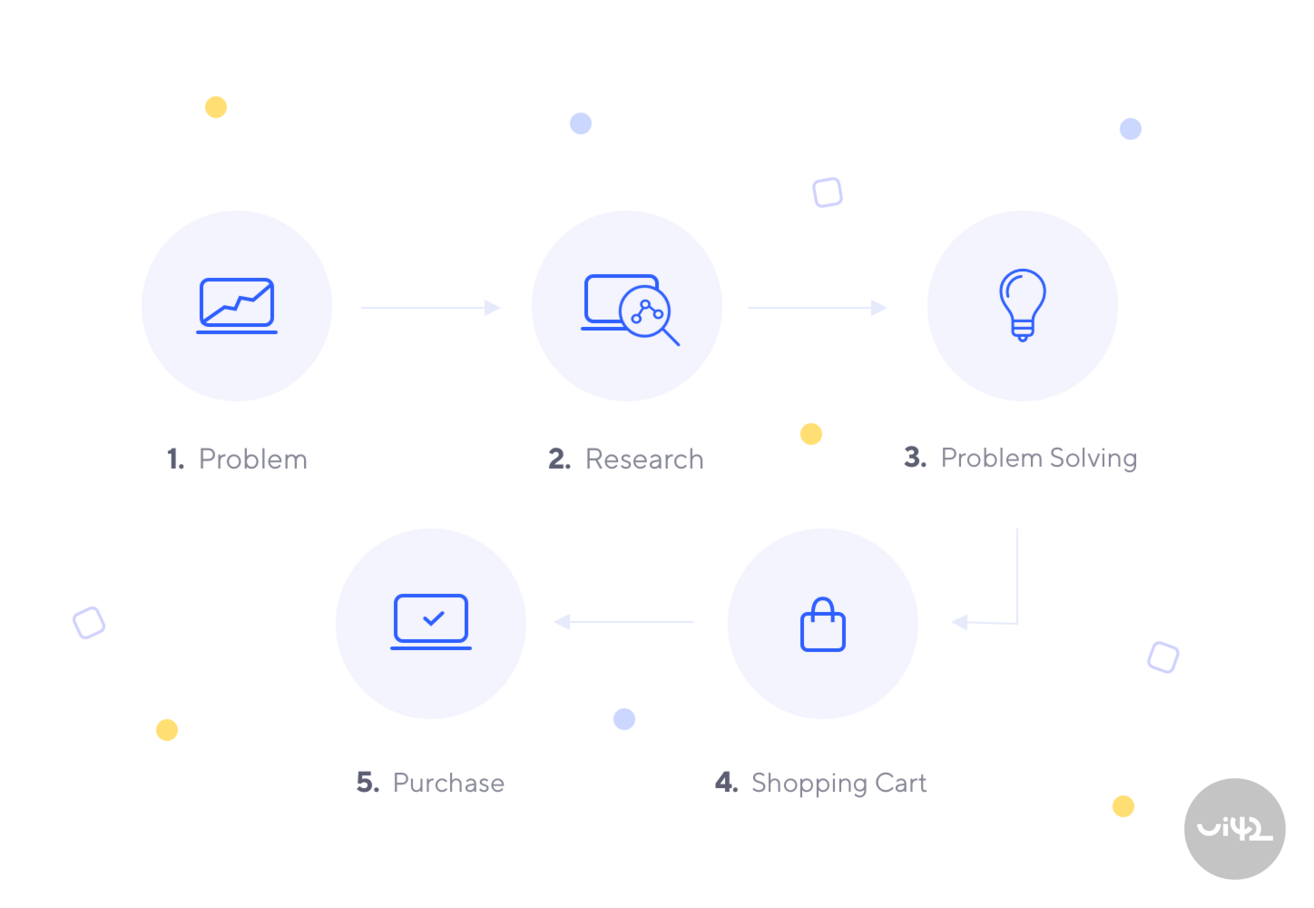Contents:
What is user experience testing
How to approach it
What are personas and how to use them
And whether focusing on a target group is the only way
Contents:
- What is user experience testing
- How to approach it
- What are personas and how to use them
- And whether focusing on a target group is the only way
Many articles have been written and many speeches given on how important it is to test and understand one’s existing and potential customers. In this article, you will find the answers to both ‘“how” and “why”.
So why did we decide to hold a candle to the sun?
Because UX is still a rather young and rapidly developing area - just as everything online. Words such as tracking, KPI or UX appeared in our dictionaries only a couple of years ago and since then we have developed many methods to test merit and usability of your projects.
We will not talk about all of them, though. We will compare two seemingly similar, although in reality very different views of the user experience testing. We will also find an answer to whether knowing our target group is our only way to success.
Or might knowing your target group be overrated?
What is "Deep user experience testing"?
As the name itself suggests, this type of testing is a very detailed and demanding form of acquiring important information from a person/respondent, who either is or might become your customer. It needs time, patience and knowledge.
Why knowledge? Because even a very well executed user experience testing can be corrupted by a wrong interpretation or incorrectly processed results.
This testing is carried out in two phases.
1. Theoretical, i.e. an interview, which is usually conducted as an open one to one conversation. Respondents are asked very specific questions targeted to explain not only their purchasing habits and motivations but also obstacles they face when shopping.
2. Practical, i.e. the actual user experience test, when the respondents are asked to interact with the project we want to test. The most common form of testing in this phase is a task given to the respondents. They must complete it and it is entirely up to them how they decide to do it. They are being monitored by the person in charge of the testing and might be asked questions. As a result, a person skilled in user testing can clearly point out illogical or otherwise problematic parts of the project.
This method is justly the most popular and used one. There is nothing better than to warm up and make the respondent comfortable with simple questions straight at the beginning, learn their previous experience and then create a tailor made task based on this information.
"There is nothing worse than to expect an authentic reaction to a hypothetical situation from a respondent, who has never experienced anything similar in their life."
Different approaches to user experience testing:
If you have tried to learn something about user experience testing, you might be familiar with the term “persona”. If you haven’t come across it yet, try imagining your project’s target group personified. Your project might have multiple target groups, thus multiple personas. Generally, the more varied assortment of products or services you offer, the more personas you have. Online shops with a variety of products such as Alza.sk, Mall.sk and their likes might have dozens of different personas. However, an online shop selling only cables and sockets will have only one or two.
What is the advantage of working with personas?
You know exactly who you are dealing with. Really! Personas are a must have for many marketers, as it might be otherwise very difficult to prepare marketing strategies for an unknown/anonymous person. For example, knowing your target is a neurosurgeon, you will certainly choose a different vocabulary and style explaining a neurological issue than if you were trying to explain the same thing to your grandmother (who is not a neurosurgeon). We don’t need to go to extremes, as we see the difference between marketing communication between brands aiming at millennials and those, whose target group is an older and more conservative generation. Clear as day. Let’s say our target group are neurosurgeons. From data available to us, we may create a following persona:
Richard Carrotman
Age: 40
Address: Bratislava
Marital status: married, 2 children
Job: Neurosurgery at Hospital X
Used devices: Mac, iPhone + desktop at work
Hobbies: Reading books on neurosurgery, foreign science magazines, dogs, nature
Additional Information: English language, travelling, courser
...and other information you are able to process
Find a great manual on how to find the right representative of your target group and what mistakes to avoid in this video by Nielsen Norman Group, the world leader in user experience testing.
There are several problems you might encounter while defining your personas. It is very difficult to set up a right persona when you have a new, emerging project, as some segments might struggle with these tasks even after years in business - and even then it might be extremely challenging for them to get their real world counterparts to do the ux testing. This is when you need to decide whether it would not be better to use your energy and investments elsewhere more efficiently.
There is another way!
Use a different approach to testing using the problem or the situation that brought the user to your project/product. It is a so-called “focus on the problem” method, or more widely known as the “Jobs-to-Be-Done” approach when we do not focus on the person who is solving the problem, be it either a 20 years old girl or a 50 year old man, but on the problem itself.
We focus on neither the person nor the product, but almost entirely on the motivation of people and the reason they act the way they do. We are trying to identify their anxieties, problems and deeper reasons, why they act the way they do, why they visit our website and why they react in certain ways.
Opinions on this method differ and as with anything else, there are both supporters and opponents.
Page Laubheimer
Senior User Experience Specialist
Nielsen Norman Group:
"With the popularity of the Jobs-to-Be-Done paradigm, there are calls in some corners to abandon personas, suggesting that JTBD has emerged as a more useful technique."
When is it better to use “Jobs-to-Be-Done?“
- New products
- Very specific assortment
- The opposite, a very broad assortment
- If you sell services or counselling, B2B segment
- Any reason that prevents using personas
Let’s look at this example:
It doesn’t really matter who you are at this moment, what your age is, where you are from or what your hobbies are. While writing this article, we focused on the reason that brought you here, to read these words (and you’ve read more than 1100 of those so far), and that reason most probably is:
- Broadening your horizons regarding user experience testing
- Looking for the way to carry out the user experience testing / you have your own product
- Stalking your competition :)
Our goal was to share the experience no matter who you are. If you are still here reading, the mission has been accomplished.
Let me leave you with a well meant piece of advice:
No matter how successful your testing is, you can never make everyone happy. Do not aim to serve 100% users or try to figure out their motivation. Focusing on the majority will give you completely satisfactory results. Do not try to define all your target groups and all the reasons people have to visit your website, because this might trap you in a very tangled and confusing situation- One where the people you are focusing on are a minority among your customers. Also, never rely only on one method of user experience testing. Combine more sources, e.g. testing supported with data.
You don´t need to be afraid to put your project into our hands. ui42 are:
- 20 years of experience
- Dozens of clients
- Hundreds of user experience tests
- Thousands of hours of UX analysing and designing
- Hundreds of thousands of sales
- Millions in profits of our very happy customers
Are you interested in getting more information? Do not hesitate to contact us!
Andrej Kajan
CEO














